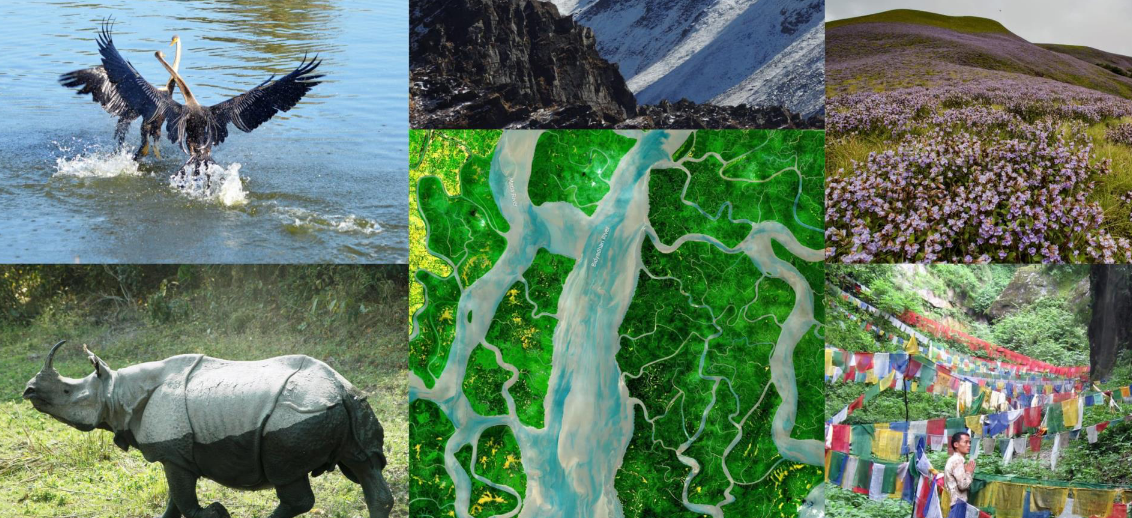Table of contents
- 1. Vande Mataram: 150 Years of Legacy & Nationwide Observances
- 2. Governance, Society & Environment
- 3. Economy, Infrastructure & Skill Development
- 3.1 Electronics Exports: India’s Rising Tech Powerhouse
- 3.2 Sugar Export Policy: 1.5 Million-Tonne Quota
- 3.3 Electronics Development Fund (EDF): Boosting Deep-Tech Innovation
- 3.4 RBI’s Emergency Export Relief Package
- 3.5 India Skills Report 2026
- 3.6 National Water Awards 2024
- 3.7 Infrastructure Milestones: Navi Mumbai Airport & Metro Expansion
- 4. Law, Data Protection & Agriculture
- 5. International Relations & Defence
- 6. Science, Technology & Health
- 7. Awards, Literature & Education
- 8. Internal Security: Delhi Car Explosion Near Red Fort
- 9. Climate & Energy: Slowing CO₂ Emission Growth in India
- 10. Sports
Current Affairs and General Awareness from 9th to 15th November 2025 was one of the most eventful of the year, blending crucial developments in environment, security, governance, economy, diplomacy, science, and defence. India witnessed heightened environmental stress with severe pollution and an incoming cold wave. It simultaneously handled a major security incident in Delhi, policy reforms in governance, progress in technology, and significant strides in infrastructure and exports.
Globally, climate diplomacy took centre stage at COP30, accompanied by geopolitical tensions in the Indo-Pacific. Defence modernisation and international scientific advances added further significance.
This comprehensive weekly review is structured to help students, competitive-exam aspirants, educators, and policy analysts understand and retain the week’s most important developments. Themes are organised in clear sections to aid systematic revision.
1. Vande Mataram: 150 Years of Legacy & Nationwide Observances
The week saw widespread national attention on Vande Mataram as India began commemorating the 150th anniversary of the iconic patriotic song composed by Bankim Chandra Chatterjee in November 1875. The Government of India launched a year-long celebration from November 2025 to November 2026 to mark this milestone.
A grand inaugural ceremony was held at the Indira Gandhi Indoor Stadium in New Delhi, where the Prime Minister released a commemorative coin and postage stamp dedicated to the occasion. The event included mass singing of Vande Mataram across schools, colleges, cultural institutions and government offices nationwide. Delhi authorities also issued a large-scale traffic advisory due to the crowds expected at the anniversary event.
1.1 State-Level Announcements & Public Reactions
In Uttar Pradesh, the state government announced that singing Vande Mataram would be made mandatory in all educational institutions, including schools and colleges. This sparked renewed debate surrounding the role of patriotic songs in formal education, national identity formation, and the cultural duties of academic institutions.
In Maharashtra, public discourse intensified after a state minister stated that those who feel hesitant or ashamed to chant the national song “should leave India.” The remark created political and social conversation around patriotism, dissent, and personal choice in national expression.
1.2 Cultural Celebrations Across Cities
The anniversary also inspired events in multiple cities. In Prayagraj, schools organised morning processions, group recitations, and cultural presentations celebrating the song’s legacy. Police personnel and civil institutions also participated in coordinated singing activities.
The Waltair Railway Division in Visakhapatnam held large group-singing ceremonies across railway stations and administrative offices, symbolising the song’s deep roots in India’s freedom movement and its continuing emotional resonance across generations.
2. Governance, Society & Environment
2.1 Delhi’s Pollution Crisis and GRAP Stage 3
Delhi’s winter pollution once again escalated into a full-blown crisis, with AQI levels entering the “severe” category. The Commission for Air Quality Management activated GRAP Stage 3, triggering stringent restrictions across the National Capital Region.
Key measures included:
Ban on non-essential construction work
Restrictions on industrial activity using polluting fuels
Reduction in vehicle emissions through enhanced checks
Control on diesel generator usage
Tightening of logistics and material-transport rules
The smog episode was driven by local vehicular emissions, construction dust, industrial output, and seasonal temperature inversion. Residual stubble burning in neighbouring states also contributed.
This event remains highly relevant for topics such as environmental governance, air-quality management, health impacts of pollution, and urban environmental planning.
2.2 Cold Wave Warning Across North India
Simultaneously, the India Meteorological Department issued a cold wave alert for several northern states including Delhi-NCR, Haryana, Uttar Pradesh, Rajasthan, Madhya Pradesh, and Jharkhand.
Highlights:
Temperatures were projected to fall 2–3°C below normal.
Cold wave conditions were expected on multiple days during the week.
Fog, mist and cold north-westerly winds intensified the chill.
Temperature inversion worsened Delhi’s pollution by trapping particulate matter near the surface.
This combination—cold wave plus severe pollution—created a dual public-health challenge, particularly for children, the elderly and individuals with respiratory illnesses.
For UPSC and other examinations, this adds value to topics such as weather phenomena, disaster management, health impacts of climate and environmental changes, and winter meteorological patterns in India.
2.3 Punjab’s Martyrdom Remembrance Month
The Punjab government announced the observance of “Martyrdom Remembrance Month” throughout November to commemorate the 350th anniversary of Guru Tegh Bahadur’s martyrdom. State-wide events—kirtans, seva campaigns, heritage programmes, and educational activities—highlighted the Guru’s sacrifice for religious freedom, dignity, and human rights.
This is significant for:
Indian culture and heritage
Sikh history in Modern India
Ethical values and pluralism
State-sponsored cultural preservation
2.4 Ease of Doing Business: Delhi Removes 21-Year Renewal Rule
In a move towards regulatory simplification, the Delhi government abolished the mandatory 21-year renewal requirement under the Delhi Shops & Establishments Act, 1954.
Impact:
Reduced compliance burden for small businesses
Smoother functioning for shops, restaurants, and micro-service enterprises
Improved ease of doing business at the state level
This aligns with reforms aimed at boosting business efficiency and lowering bureaucratic hurdles.
2.5 Road-Safety Enforcement: Gurugram’s Traffic Drive
Gurugram Police, under the campaign #ChallanNahiSalamMilega, issued more than 17,000 challans within one week. The campaign used CCTV cameras and drones to detect violations such as:
Wrong-side driving
Helmets and seat-belts non-compliance
Overspeeding
Indiscipline at intersections
The campaign emphasised behavioural change through positive messaging, combining enforcement with awareness.
3. Economy, Infrastructure & Skill Development
3.1 Electronics Exports: India’s Rising Tech Powerhouse
India’s electronics exports surged dramatically and became the third-largest export category. Key patterns included:
Over USD 40 billion exported in FY25
USD 22 billion recorded in the first half of FY26
Electronics rose to over 10% of India’s export basket
Smartphones and telecom equipment made up nearly two-thirds of exports
The surge was driven by manufacturing incentives, global diversification away from China, and strong US demand.
3.2 Sugar Export Policy: 1.5 Million-Tonne Quota
After improved domestic output, India approved sugar exports of 1.5 million tonnes for the 2025–26 season. With stable production and reduced domestic pressure, India re-entered the international market strategically.
Importance:
Balances farmer income and consumer interests
Influences global sugar prices
Supports sugar mills and impacts ethanol-blending dynamics
3.3 Electronics Development Fund (EDF): Boosting Deep-Tech Innovation
The Electronics Development Fund, launched earlier to support innovation, reported funding over 128 start-ups and investing around ₹250+ crore.
Supported areas:
Semiconductors
Embedded systems
Medical electronics
IoT and AI hardware
Cyber-security platforms
This supports India’s ambition to become a global semiconductor and electronics hub.
3.4 RBI’s Emergency Export Relief Package
The Reserve Bank of India announced targeted measures for exporters under stress due to global tariff changes and weakened demand.
Key measures:
Moratorium on term-loan repayments
Extension of export-credit deadlines from 270 to 450 days
Extended period for realising export proceeds
Relaxed asset-classification norms
Complementary support from central government guarantee schemes
Such measures stabilize MSME exporters and protect jobs in labour-intensive sectors.
3.5 India Skills Report 2026
The India Skills Report 2026 revealed:
Overall employability: 56.35%
Women’s employability overtook men’s for the first time
Uttar Pradesh emerged as the leading talent hub
Tech, BFSI, manufacturing, renewables and healthcare were top recruiting sectors
Increase in demand for remote work and gig-economy roles
This reflects evolving labour-market conditions and India’s demographic potential.
3.6 National Water Awards 2024
The 6th edition honoured 46 winners across categories including:
Best State: Maharashtra
Best Local Body: Navi Mumbai Municipal Corporation
Best Institutions: Army Public School Ballygunge & RCCF Berhampur
The awards highlight innovative water conservation, reuse, and local governance efforts.
3.7 Infrastructure Milestones: Navi Mumbai Airport & Metro Expansion
Two major infrastructure developments were recorded:
Navi Mumbai International Airport set for opening on 25 December 2025
Mandale Metro Depot, Asia’s largest elevated depot, became operational for Mumbai Metro Line 2B
These represent progress in urban mobility, aviation capacity, and economic development.
4. Law, Data Protection & Agriculture
4.1 Data Protection Rules 2025
The government released Digital Personal Data Protection (DPDP) Rules 2025, operationalising the DPDP Act 2023.
Key provisions:
Obligations for companies (data fiduciaries)
Breach-notification requirements
Establishment of the Data Protection Board of India
Higher obligations for “Significant Data Fiduciaries”
Concerns related to exemptions and RTI restrictions
This is vital for understanding India’s evolving digital governance framework.
4.2 Draft Seeds Bill 2025
The draft Seeds Bill aims to modernise India’s seed laws. Its proposals include:
Compulsory registration of seed varieties
Quality standardisation
Compensation mechanisms for farmers
Traceability and transparency in the seed supply chain
This is critical for agriculture, food security and farm-level risk-mitigation.
5. International Relations & Defence
5.1 COP30 in Brazil: Climate and Health at the Forefront
The 30th UN Climate Conference placed special focus on health under the Belém Health Action Plan, mobilising hundreds of millions of dollars for:
Climate-resilient health systems
Disease-related research
Early-warning infrastructure
Support for vulnerable communities
The partial absence of major players in global climate politics raised questions about global climate governance.
5.2 Growing China–Japan Tensions Over Taiwan
Japan’s new leadership signalled stronger support for Taiwan’s defence. China reacted sharply, increasing friction in East Asia. The tension is crucial from India’s strategic lens considering:
Indo-Pacific power balance
QUAD dynamics
Regional maritime security
Strategic partnerships with Japan and the US
5.3 Defence Technology Updates
Important defence developments included:
A new US–UAE drone system
China’s Type 076 amphibious assault ship advancing sea trials
India’s DRDO unveiling new portable underwater vehicles for mine-counter-measures
These developments reflect rapid innovations in autonomous warfare and maritime capability.
5.4 Nyoma Airbase Operationalised in Ladakh
India operationalised the Nyoma Airbase, one of the world’s highest airbases, located close to the Line of Actual Control (LAC) in eastern Ladakh.
Significance:
Enhances India’s rapid-deployment capability
Strengthens logistics in high-altitude warfare
Acts as a strategic counterweight to China’s infrastructure in Tibet
Capable of handling transport aircraft, fighters, and helicopters
A major boost to India’s border defence posture.
6. Science, Technology & Health
6.1 Advances in Research
This week saw developments across scientific fields:
Discovery of a prehistoric apex marine predator
New research linking oestrogen to enhanced dopamine and improved learning
NASA experiments on soft matter in microgravity
Such breakthroughs are frequently tested under science & tech, space research, and biotechnology.
6.2 Comet C/2025 K1 (ATLAS)
The comet continued to attract global attention after surviving a close solar pass. It is expected to come nearest to Earth later in November 2025. This contributes to astronomy awareness and science communication.
6.3 Technology and Corporate Innovation
Major tech-business developments included:
AI-driven growth projections boosting semiconductor markets
Strategic cloud and AI partnerships between major IT consultancies and cloud providers
Telecommunications companies adopting advanced automated network-testing systems
These signify strong integration of AI, cloud, and telecom technologies in India’s economic ecosystem.
7. Awards, Literature & Education
7.1 Bal Sahitya Puraskar 2025
The annual awards honoured children’s literature across 22 scheduled languages, English, and Rajasthani. Awarded works covered poetry, stories, drama, and non-fiction.
7.2 For Women in Science Awards
International recognition was given to women scientists working in biomedical and life-science fields. This contributes to the discourse on gender diversity in STEM.
8. Internal Security: Delhi Car Explosion Near Red Fort
A tragic incident shook the nation when a car exploded near the Red Fort in Delhi, resulting in multiple casualties and injuries.
Key details:
A parked vehicle exploded near a busy metro-station junction
Several other vehicles caught fire
The incident was classified a terrorist attack
National Investigation Agency (NIA) took over the probe
Security was tightened across Delhi-NCR
Early investigations pointed to an improvised explosive device
The attack raises critical concerns about urban security, policing, and intelligence coordination.
9. Climate & Energy: Slowing CO₂ Emission Growth in India
India recorded a significant slowdown in CO₂ emission growth, with power-sector emissions even registering a decline—only the second such instance in five decades.
Contributing factors:
Slower growth in electricity demand
Record growth in renewable-energy capacity
Higher hydro-power output
Reduced reliance on fossil-fuel-based generation
Implications:
Signals early signs of decoupling emissions from economic growth
Supports India’s long-term climate commitments
Reinforces renewable-energy progress and structural shifts in the power sector
10. Sports
10.1 Cricket
India gained a strong position in the first Test against South Africa in Kolkata, highlighted by disciplined bowling performances.
10.2 Badminton
Lakshya Sen reached the semi-finals of the Kumamoto Masters, showcasing continued excellence among India’s badminton players.
10.3 Tennis
Build-up to the men’s ATP Finals highlighted potential clashes among the world’s top seeds, creating excitement in international tennis circuits.









